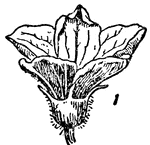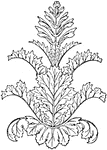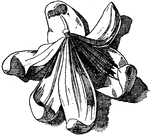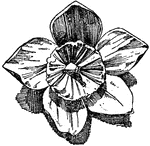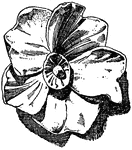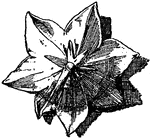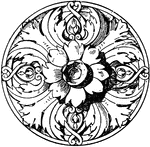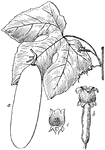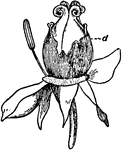
Peony Bud
Paeonia) is the only genus in the flowering plant family Paeoniaceae. They are native to Asia, southern…

Foxglove
An illustration of: 1, Coralla cut open showing the four stamens; 2, Unripe fruit (lengthwise); 3, ripe…

Sedum
Sedum is the large stonecrop genus of the Crassulaceae, representing about 400 species of leaf succulents,…
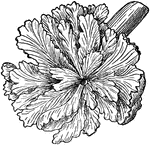
Wood Rose
"Wood-rose, a remarkable vegetable excrescence, resembling a flower with radiating corrugated petals…
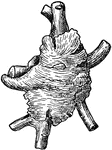
Wood Rose
"Wood-rose, a remarkable vegetable excrescence, resembling a flower with radiating corrugated petals…

False Rue Anemone
The plant and fruit of the False Rue Anemone (Isopyrum biternatum). It is a flowering plant in the Ranunculaceae…
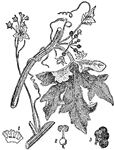
Bryony
Bryony is the common name for any of twelve species in the genus Bryonia. These are perennial, tendril-climbing,…

Sagebrush
"Pasture Sage-brush (Artemisia frigida). a, leaf; b, flower-head; c, fertile flower; d, marginal flower."…

Canadian St. John's Wort
"Canadian St.-John's-wort (Hypericum Canadense). a, leaf; b, seed-capsule." -Whitney, 1911

Marsh St. John's Wort
"Marsh St.-John's-wort (Triadenum Virginicum). a, flower; b, seed-capsule." -Whitney, 1911
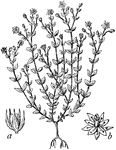
Thyme-Leaved Sandwort
"Thyme-leaved Sandwort (Arenaria serpyllifolia). a, capsule surrounded by the scarious calyx; b, expanded…
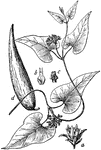
Sand Vine
"Sand-vine (Gonolobus lavis). a, flower; b, crown-lobe tipped by a 2-cleft awn; c, stamen-tube; d, follicle…
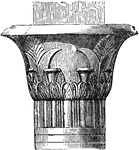
Capital in the Temple at Edfu
The capitals of the columns display an immense variety. The most beautiful have a crater-like form,…

Capital in the Temple at Edfu
The capitals of the columns display an immense variety. The most beautiful have a crater-like form,…

Gentiana
Gentianaceae, or the Gentian family, is a family of flowering plants of 87 genera and over 1500 species.
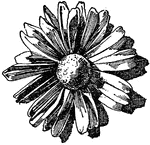
Chrysanthemum Flower
The Chrysanthemum flower is used as an ornament design in flat and relief forms.
Antique Vase Painting Rosette band
The antique vase painting rosette band is a pattern of a small flower.

Intarsia Border Rosette Band
The intarsia border rosette band is a design of a flower made by wood inlaying.

Greek Hydria Rosette Band
The Greek hydria rosette band is a design of the neck of a Greek hydria flower.

Latin Evangeliarum Rosette Band
The Latin Evangeliarum rosette band is an 8th century design of a flower. It was designed by Godescald…

Enamel Ornament Rosette Band
The enamel ornament rosette band is designed on a great reliquary container that holds religious relics.

Evolute Spiral Border
The evolute spiral border is a wavelike pattern that mimics the wave of the sea. Designed by Sebastian…

Evolute Spiral Frieze
The evolute spiral frieze is a wavelike pattern that mimics the waves of the sea. Its interstices (small…

Evolute Spiral Stove Tile
The evolute spiral stove tile is a painting during the German Renaissance. It is a wavelike pattern…

Medieval Grill Finial
The medieval grill finial is made out of wrought-iron and is in the shape of a flower.

Part of Grill Finial
The part of grill finial is a 15th century design found on the Toulouse Cathedral in France. It is made…
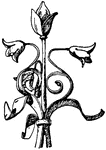
Termination of Fountain Finial
The termination of fountain finial is a 15th century design found in the Cluny museum in Paris, France.…

Spanish Trellis Gate Finial
This is part of a spanish trellis gate. Designed during the 14th century, it is made of wrought-iron…

Terminal Finial
The terminal finial is a 17th century design found in Bruges, Belgium. It is made out of wrought-iron…

Cyperus
An illustration of the partial inflorescence of a cyperus plant, spikelet of the same (left), and the…
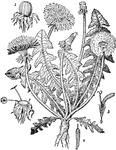
Dandelion
Taraxacum is a large genus of flowering plants in the family Asteraceae. They are native to Europe,…
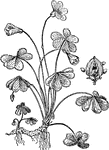
Oxalis
Oxalis is the largest genus in the wood sorrel family Oxalidaceae. Of the approximately 900 known species…
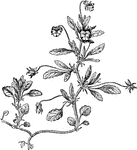
Heartsease
Heartsease (Viola tricolor) is a common European wild flower, growing as an annual or short-lived perennial.…
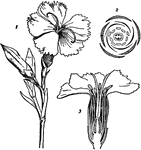
Dianthus
Dianthus is a genus of about 300 species of flowering plants in the family Caryophyllaceae, native mainly…
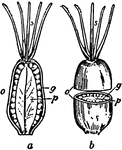
Mouse-ear Chickweed
An illustration of the pistil, female reproductive part of the flower, from the mouse-ear chickweed.…
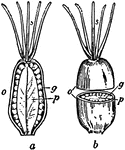
Cashew Tree
An illustration of various parts of the cashew tree. "1, Branch, bearing flowers and fruit. The fruit…
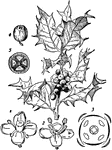
Holly
Ilex aquifolium (Holly, or European Holly to distinguish it from related species) is a species of holly…
